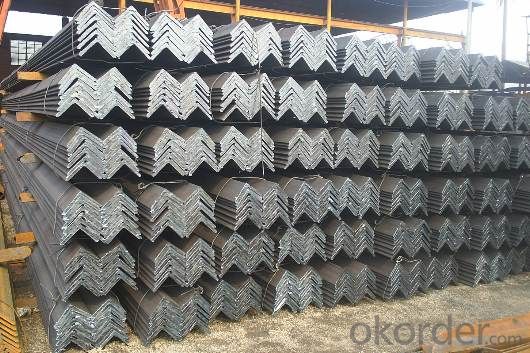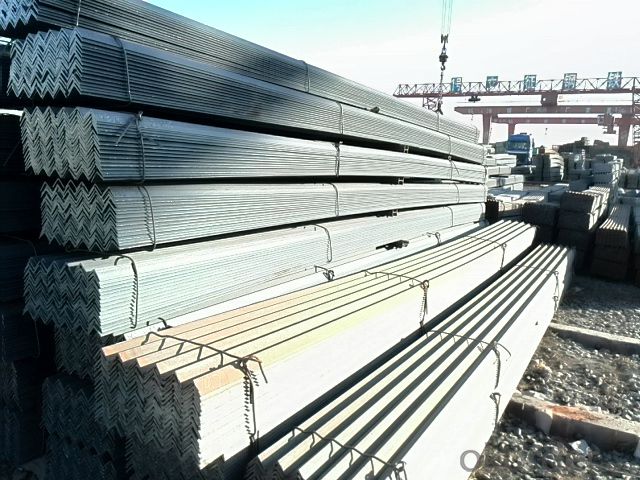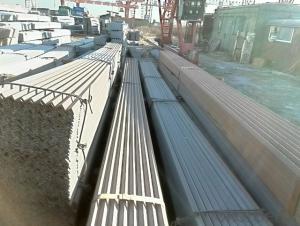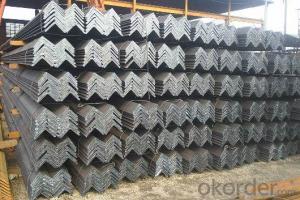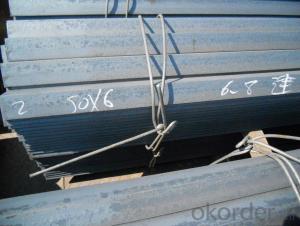Hot Rolled Steel Angles with Best Quality
- Loading Port:
- Tianjin
- Payment Terms:
- TT OR LC
- Min Order Qty:
- 25 m.t
- Supply Capability:
- 10000 m.t/month
OKorder Service Pledge
OKorder Financial Service
You Might Also Like
OKorder is offering Hot Rolled Equal Angles at great prices with worldwide shipping. Our supplier is a world-class manufacturer of steel, with our products utilized the world over. OKorder annually supplies products to European, North American and Asian markets. We provide quotations within 24 hours of receiving an inquiry and guarantee competitive prices.
Product Applications:
Hot Rolled Equal Angles are ideal for structural applications and are widely used in the construction of buildings and bridges, and the manufacturing, petrochemical, and transportation industries.
Product Advantages:
OKorder's Hot Rolled Equal Angles are durable, strong, and resist corrosion.
Main Product Features:
· Premium quality
· Prompt delivery & seaworthy packing (30 days after receiving deposit)
· Corrosion resistance
· Can be recycled and reused
· Mill test certification
· Professional Service
· Competitive pricing
Product Specifications:
Manufacture: Hot rolled
Grade: Q195 – 235
Certificates: ISO, SGS, BV, CIQ
Length: 6m – 12m, as per customer request
Packaging: Export packing, nude packing, bundled
Sizes: 25mm-250mm | ||
a*t | ||
25*2.5-4.0 | 70*6.0-9.0 | 130*9.0-15 |
30*2.5-6.6 | 75*6.0-9.0 | 140*10-14 |
36*3.0-5.0 | 80*5.0-10 | 150*10-20 |
38*2.3-6.0 | 90*7.0-10 | 160*10-16 |
40*3.0-5.0 | 100*6.0-12 | 175*12-15 |
45*4.0-6.0 | 110*8.0-10 | 180*12-18 |
50*4.0-6.0 | 120*6.0-15 | 200*14-25 |
60*4.0-8.0 | 125*8.0-14 | 250*25 |
FAQ:
Q1: Why buy Materials & Equipment from OKorder.com?
A1: All products offered byOKorder.com are carefully selected from China's most reliable manufacturing enterprises. Through its ISO certifications, OKorder.com adheres to the highest standards and a commitment to supply chain safety and customer satisfaction.
Q2: The products are invoicing on theoritical weight or on actual weight?
A2: We can do it in both manners, according to the customers' request.
Q3: Can stainless steel rust?
A3: Stainless does not "rust" as you think of regular steel rusting with a red oxide on the surface that flakes off. If you see red rust it is probably due to some iron particles that have contaminated the surface of the stainless steel and it is these iron particles that are rusting. Look at the source of the rusting and see if you can remove it from the surface.
Images:
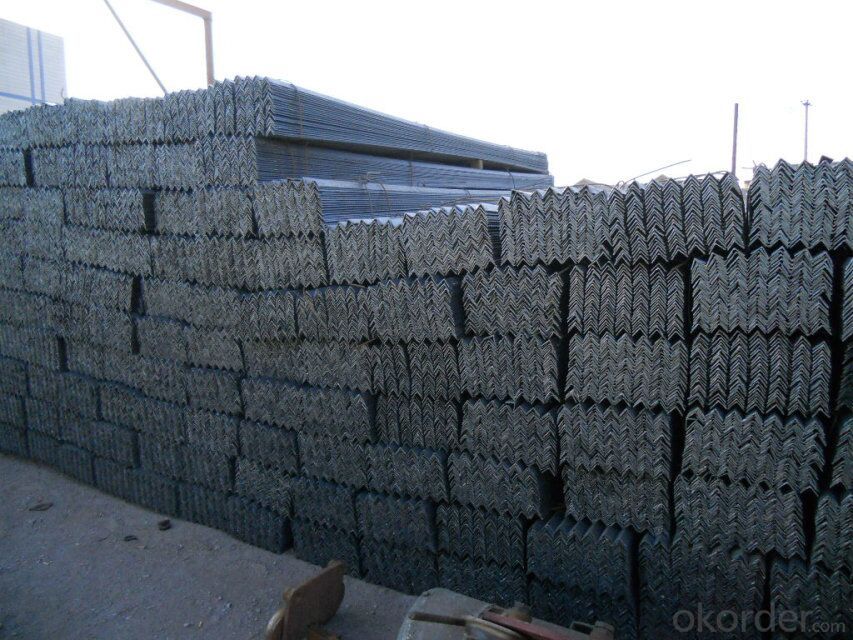
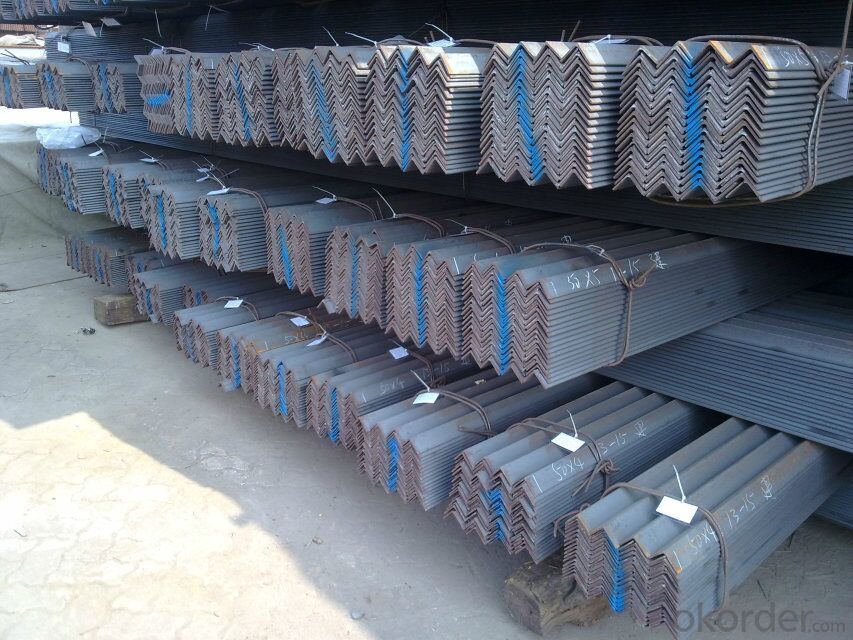
- Q: What are the standard lengths for steel angles?
- The standard lengths for steel angles can vary depending on the manufacturer and specific requirements, but common lengths range from 20 feet to 40 feet.
- Q: Can steel angles be used in the construction of bridges?
- Steel angles have a wide range of applications in the construction of bridges. They are frequently utilized due to their versatility and ability to enhance the strength and support of bridge structures. Specifically, they are commonly employed in constructing bridge decks, railings, and supports. The high strength-to-weight ratio of steel angles makes them especially suitable for bridge construction. They can withstand heavy loads and contribute to the stability of the bridge structure. Moreover, their durability and resistance to corrosion are vital attributes for bridges exposed to diverse environmental conditions. In bridge construction, steel angles are often combined with other steel components, such as beams and columns, to create a robust and dependable structure. They are frequently employed as bracing elements to reinforce the overall stability of the bridge. Additionally, steel angles can serve as connection elements, securely joining different parts of the bridge. In summary, steel angles play a critical role in bridge construction by providing strength, durability, and stability. Their versatility and reliability make them a preferred choice for engineers and designers when constructing bridges of various sizes and types.
- Q: Can steel angles be used for HVAC ductwork?
- Indeed, HVAC ductwork can utilize steel angles. In the construction field, steel angles are frequently employed for diverse purposes, such as acting as supports and reinforcements. In terms of HVAC ductwork, steel angles can serve as a framework, ensuring stability and bolstering the ducts. Through welding or bolting, they can be joined together to create a robust and enduring structure for the ductwork system. Moreover, steel angles can be easily tailored and cut to specific lengths, making them suitable for various configurations of ductwork. Nevertheless, it is crucial to bear in mind that appropriate insulation and lining might be necessary for steel angles to prevent condensation and maintain the desired temperature within the ducts.
- Q: What are the standard tolerances for steel angles?
- The standard tolerances for steel angles vary depending on the specific industry and application. However, in general, the standard tolerances for steel angles typically include dimensional tolerances such as length, width, and thickness, as well as straightness and twist tolerances. These tolerances ensure that the steel angles meet the required specifications and can be effectively used in various construction and manufacturing processes.
- Q: Can steel angles be used as bracing elements?
- Indeed, steel angles have the capability to serve as bracing elements. Construction and engineering projects frequently employ steel angles due to their robustness and longevity. These angles are commonly utilized to furnish structural support and stability, including as bracing elements. A rigid and secure bracing system can be established by either bolting or welding steel angles to other structural components. The design of these angles, with their L-shape, facilitates easy attachment to other members, thus imparting additional strength and resilience against lateral forces like wind or seismic loads. In summary, steel angles are a dependable choice for bracing elements across a wide range of applications, encompassing buildings, bridges, and industrial structures.
- Q: What is a steel angle?
- A steel angle, also known as an angle iron or L-shaped bar, is a structural steel product that features two perpendicular legs joined together at a 90-degree angle. It is commonly used in construction and engineering applications as a support or reinforcement for various structures due to its strength and versatility. Steel angles are typically made from carbon steel or stainless steel and come in various dimensions, thicknesses, and lengths to suit different project requirements. They can be easily cut, welded, and bolted, making them a popular choice for framing, bracing, and supporting beams, columns, and other structural elements. Additionally, steel angles are also frequently utilized in the manufacturing of shelves, brackets, frames, and other metalwork applications.
- Q: Can steel angles be drilled or punched for fastening?
- Yes, steel angles can be drilled or punched for fastening. Steel angles are commonly used in construction and manufacturing industries for their structural strength and versatility. When it comes to attaching steel angles to other materials or fastening them together, drilling or punching holes is a common method. Drilling is the process of creating holes in steel angles using a drill bit. This allows for precise placement of holes and is suitable for applications where the angle needs to be attached to a specific location. Drilling can be done manually or with the help of drilling machines, depending on the scale of the project. Punching, on the other hand, involves using a punch and die set to create holes in steel angles. This method is faster and more efficient than drilling, especially when dealing with large quantities of angles. Punching machines can create holes of various sizes and shapes, making it suitable for different fastening requirements. Once the holes are drilled or punched, fastening can be done using bolts, screws, or rivets. These fasteners are inserted through the holes and tightened to securely hold the steel angles together or attach them to other materials. The choice of fastening method depends on the specific application and load requirements. In summary, steel angles can indeed be drilled or punched for fastening. Whether it's for attaching steel angles to other materials or joining them together, drilling or punching holes provides the necessary means for secure and reliable fastening in various construction and manufacturing projects.
- Q: How many meters is one angle steel?
- Angle called angle, the steel strip is perpendicular to each other on both sides into the corner. There are equal angles and unequal angles. The two sides of an equal angle steel are equal in width. The specifications are expressed in millimeters of edge width * edge width * edge thickness. Such as "/ 30 x 30 x 3", that is 30 mm width equal angle, edge thickness of 3 mm. Also available models that model is the number of centimeters wide, such as angle 3#. The model does not mean the size of the different edges and sizes of the same model. Therefore, the width, the edge and the thickness of the angle iron should be filled out in the contract and other documents, so as not to be indicated by the model alone.
- Q: How do you protect steel angles from corrosion?
- Steel angles can be protected from corrosion in various ways. One of the most commonly used methods is the application of a protective coating, such as paint or a specialized corrosion-resistant coating. This creates a barrier between the steel and its surroundings, preventing moisture and corrosive agents from reaching the metal surface. Another effective approach is to galvanize the steel angles. This involves coating the steel with a layer of zinc, which acts as a sacrificial anode. Instead of the steel corroding, the zinc sacrifices itself, providing long-lasting protection against rust and corrosion. Regular maintenance is also crucial for corrosion prevention. It is important to regularly clean the surface to remove dirt, debris, and other contaminants that can accelerate corrosion. Additionally, inspecting the steel angles for any signs of damage or wear and promptly repairing or replacing any compromised areas can help stop corrosion from spreading. Using stainless steel angles is another option for corrosion protection. Stainless steel contains a significant amount of chromium, which forms a passive layer on the surface when exposed to oxygen. This passive layer acts as a protective barrier against corrosion, making stainless steel angles highly resistant to rust and corrosion in various environments. Lastly, ensuring proper drainage and ventilation around steel angles is essential to prevent the accumulation of moisture, which can contribute to corrosion. By employing proper design and installation techniques that minimize contact with water and moisture, the lifespan of steel angles can be significantly extended, and the risk of corrosion reduced.
- Q: Are steel angles resistant to vibrations?
- Yes, steel angles are generally resistant to vibrations due to their rigid and sturdy structure. The inherent strength and stability of steel make it a suitable material for withstanding vibrations caused by various sources.
Send your message to us
Hot Rolled Steel Angles with Best Quality
- Loading Port:
- Tianjin
- Payment Terms:
- TT OR LC
- Min Order Qty:
- 25 m.t
- Supply Capability:
- 10000 m.t/month
OKorder Service Pledge
OKorder Financial Service
Similar products
Hot products
Hot Searches
Related keywords




